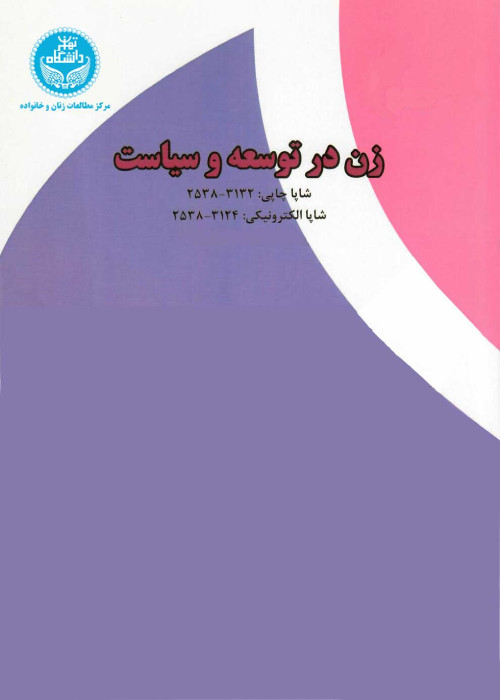An investigation on the Dimensions of Social Exclusion of the Rural Female Household heads in terms of Employment and Residence
Author(s):
Abstract:
The present article investigates and compares the situation of poor women exclusion based on variations and components of exclusion. The primary research question is whether social exclusion status among women of different groups, specially the employed/ unemployed and native/immigrant women, vary? Have the women been able to join intergroup networks through working outside home and receive support from such groups? Are poverty and social exclusion similar phenomena and occur together in the life of poor women?In order to collect data quantitative (survey) and qualitative (interview) methods were used. The main aspects of social exclusion, including exclusion from support networks,¬ social relations, social participation, are measured. The statistical sample includes 169 women (who are under coverage of Komite- ye-Emdad, Malard villages, Shahriar). Taking advantage of inferential test, the difference in exclusion rate between groups is investigated in terms of employment (the employed –the unemployed) and residence (native-immigrant). The qualitative method is used to arrive at a profound understanding of women’s life experience in relation to some components of exclusion. A sample consisting of 51 women were determined purposefully based on various specifications, and interviewed.The results of social exclusion status among the two groups of native and immigrant women indicate that native poor women enjoy the strongest bonding support network in terms of supportiveness and, in other words, they experience the least exclusion in comparison with the immigrate women. Also, native poor women are more active in informal social activities than immigrant women. The results of the research indicate that participation of some women in labour market contributes to making intergroup ties and profiting from their sources. By virtue of the fact, the employed women enjoy the strongest and the most heterogeneous intergroup support network than those who are unemployed. Further, the economic activities of such women have provided more extensive supportive scope and more supportive sources. In other words, intergroup support networks for women are not often networks for getting ahead, but they are networks for getting by. Furthermore, the changing status of woman's employment in labour market and their problems in social relationships eliminate the possibility of accessing intergroup support networks.Moreover, findings of this research verify that social exclusion and poverty are not similar phenomena and dont occur necessarily together. These findings illustrate that although these women are poor according to Komite-ye-Emdad's indicators, but they are not excluded in all comparable dimensions and in the same degree.
Keywords:
Language:
Persian
Published:
Women in Development and Politics, Volume:8 Issue: 2, 2010
Pages:
93 to 114
magiran.com/p745525
دانلود و مطالعه متن این مقاله با یکی از روشهای زیر امکان پذیر است:
اشتراک شخصی
با عضویت و پرداخت آنلاین حق اشتراک یکساله به مبلغ 1,390,000ريال میتوانید 70 عنوان مطلب دانلود کنید!
اشتراک سازمانی
به کتابخانه دانشگاه یا محل کار خود پیشنهاد کنید تا اشتراک سازمانی این پایگاه را برای دسترسی نامحدود همه کاربران به متن مطالب تهیه نمایند!
توجه!
- حق عضویت دریافتی صرف حمایت از نشریات عضو و نگهداری، تکمیل و توسعه مگیران میشود.
- پرداخت حق اشتراک و دانلود مقالات اجازه بازنشر آن در سایر رسانههای چاپی و دیجیتال را به کاربر نمیدهد.
In order to view content subscription is required
Personal subscription
Subscribe magiran.com for 70 € euros via PayPal and download 70 articles during a year.
Organization subscription
Please contact us to subscribe your university or library for unlimited access!


